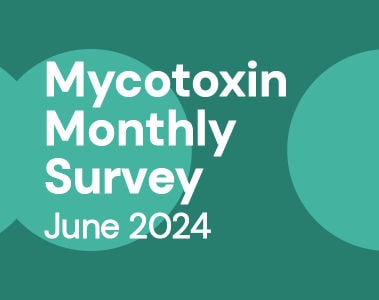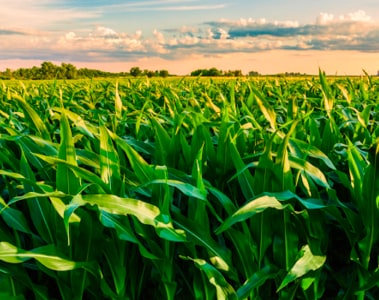
-
North America/EN
- Global
- North America
- Latin America
Romer Labs, Inc. Analytical Services in Union, MO is converting dsm-firmenich customers using mycotoxin analytical services from the existing multi-mycotoxin LC-MS/MS method (24003000S023) to the updated LC-MS/MS PLUS method (24003000S034). The PLUS method features workflow improvements as well as enhanced sensitivity and has been implemented on samples received by the lab as of August 1, 2023. The following changes are expected as part of the updated PLUS method analysis:
What has changed:
What has not changed:
Please contact your dsm-firmenich representative if you have questions about the updated Romer Labs LC-MS/MS Multi-Mycotoxin PLUS method which is now part of the dsm-firmenich mycotoxin analytical service program.
Table 1. Limits of Detection (LOD) and Limits of Quantitation (LOQ) for the Romer Labs LC-MS/MS Multi-Mycotoxin Methods
Mycotoxin Family* | Mycotoxins | Limit of Detection (LOD; ppb) | PLUS Method Limit of Quantitation (LOQ; ppb) | |
Previous Method | PLUS Method | |||
Aflatoxins | Aflatoxin B1 | 1.3 | 0.2 | 0.6 |
Aflatoxin B2 | 1.2 | 0.2 | 0.6 | |
Aflatoxin G1 | 1.1 | 0.2 | 0.6 | |
Aflatoxin G2 | 1.6 | 0.2 | 0.6 | |
Type A Trichothecenes (A Trich) | T-2 Toxin | 100.0 | 5 | 15 |
HT-2 Toxin | 100.0 | 5 | 15 | |
Neosolaniol | 100.0 | 5 | 15 | |
Diacetoxyscirpenol | 100.0 | 5 | 15 | |
Type B Trichothecenes (B Trich) | Deoxynivalenol | 100.0 | 105 | 350 |
3 Acetyl-deoxynivalenol |
100.0** | 105 | 350 | |
15 Acetyl-deoxynivalenol | 105 | 350 | ||
Nivalenol | 100.0 | 105 | 350 | |
Fusarenon X | 100.0 | 105 | 350 | |
Fumonisins | Fumonisin B1 | 100.0 | 50 | 160 |
Fumonisin B2 | 100.0 | 50 | 160 | |
Fumonisin B3 | 100.0 | 50 | 160 | |
Zearalenone | Zearalenone | 51.7 | 1 | 5 |
Ochratoxin A | Ochratoxin A | 1.1 | 0.4 | 1.2 |
*Total values will be reported as the summation of all mycotoxins included within the respective Mycotoxin Family.
**Acetyl-deoxynivalenol previously reported as a single value.
21 August 2023


21 Oct 2024
The September issue of The Digest included an overview of factors which influence the presence of mycotoxins in crops to help provide the rationale behind the 2024 corn crop mycotoxin predictions which will be revealed in this issue. A limited number of new crop samples have been submitted for analysis through our PROcheck mycotoxin testing service to date, so there is limited data to help substantiate the predictions at this time, but we hope that we’ll have more results by the time the November issue of The Digest is released in order to compare actual contamination data to this month’s predictions. Join us as we navigate this year’s growing conditions and predict what 2024 corn mycotoxin pressures will be!
We detected that you are visitng this page from United States. Therefore we are redirecting you to the localized version.